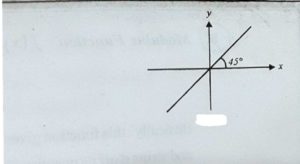IB Mathematics Tutors should give a fair number of hours in teaching functions. This is my third article on functions in the series of ib mathematics
For the sake of a comprehensive discussion, some standard functions and their graphs are discussed here
For the sake of a comprehensive discussion, some standard functions and their graphs are discussed here
1.Constant Function-
F(x)=k
Domain= ℝ
Range = {k}
Range = {k}
2.Identity Function-
F(x)=x
Domain= ℝ
Range = ℝ

3.Linear Function-
F(x)=mx+c
Domain= ℝ
Range = ℝ
4.Quadratic Function-
F(x)=x2
Domain= ℝ
Range =(0, ∞]
5.Cube Function-
F(x)=x3
Domain= ℝ
Range = ℝ
6.Reciprocal Function-
F(x)=1/x
Domain= ℝ-{0}
Range = ℝ-{0}
7.Step Function-
F(x)=0 if x∠0
=1 if x≥0
Domain= ℝ
Range ={0,1}
8. Absolute value Function-
F(x)=|x| = x if x≥0
=-x if x∠0
Basically, this function gives the magnitude of a number and strips it of its negative sign, if it is negative.
Domain= ℝ
Range = [0, ∞)
9.Exponential Function-
F(x)= ex
Domain= ℝ
Range =(0,∞)
10.Logarithmic Function-
F(x)=lnx
Range = ℝ
Domain = (0,∞)
11.Exponential Function-
F(x)= ex
Domain= ℝ
Range =(0,∞)
Notice what happen if we draw F(x)=ex and F(x)=lnx on the same axis
the graph of each function seems to be mirror reflections of each other in the line y=x
(In fact, they are!!)
that is F(g(x))=x and g(f(x))=x
these types of functions are called inverse functions
In my next article on IB Mathematics Tutors series, I will write more about types of functions
